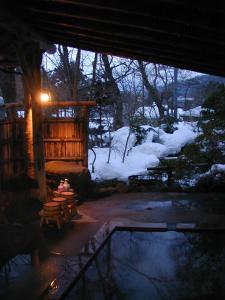Naruko, Miyagi on:
[Wikipedia]
[Google]
[Amazon]
 was a
was a
 was a
was a town
A town is a human settlement. Towns are generally larger than villages and smaller than cities, though the criteria to distinguish between them vary considerably in different parts of the world.
Origin and use
The word "town" shares an ori ...
located in Tamatsukuri District, Miyagi Prefecture, Japan
Japan ( ja, 日本, or , and formally , ''Nihonkoku'') is an island country in East Asia. It is situated in the northwest Pacific Ocean, and is bordered on the west by the Sea of Japan, while extending from the Sea of Okhotsk in the north ...
.
On March 31, 2006, Naruko, along with the city of Furukawa, the town of Iwadeyama (also from Tamatsukuri District), the towns of Kashimadai, Matsuyama
270px, Matsuyama City Hall
270px, Ehime Prefectural Capital Building
is the capital city of Ehime Prefecture on the island of Shikoku in Japan and also Shikoku's largest city. , the city had an estimated population of 505,948 in 243541 househo ...
and Sanbongi (all from Shida District), and the town of Tajiri (from Tōda District), to create the new city of Ōsaki. Tamatsukuri District and Shida District were dissolved as a result of this merger.
Geography
Nestled in the mountainous backbone ofTōhoku region
The , Northeast region, or consists of the northeastern portion of Honshu, the largest island of Japan. This traditional region consists of six prefectures (''ken''): Akita, Aomori, Fukushima, Iwate, Miyagi, and Yamagata.
Tōhoku reta ...
, Naruko is located entirely within the Kurikoma Quasi-National Park
is a Quasi-National Park that extends between Akita, Iwate, Miyagi, and Yamagata Prefectures, Japan.
Established in 1968, the central feature of the park is at .
It is rated a protected landscape (category II) according to the IUCN.
Like ...
. Haiku poet Matsuo Bashō passed through the area on the trip that became his masterwork ''Oku no Hosomichi
''Oku no Hosomichi'' (, originally ), translated as ''The Narrow Road to the Deep North'' and ''The Narrow Road to the Interior'', is a major work of ''haibun'' by the Japanese poet Matsuo Bashō, considered one of the major texts of Japanese li ...
''.
Tourism and Sightseeing
The volcanically active area is famous for the Naruko Hot Spring Villages (鳴子温泉郷), a cluster of five villages -- Naruko, East Naruko, Nakayamadaira, Kawatabi and Onikōbe -- with abundant hot springs. The reputed curative properties of the springs make them especially popular with people in ill health. Several ski resorts also operate nearby in the winter. Naruko is one among many places to claim to have originated the ''kokeshi
, are simple wooden Japanese dolls with no arms or legs that have been crafted for more than 150 years as a toy for children. Originally from the northeastern region ( Tōhoku-chihō) of Japan, they are handmade from wood, having a simple trunk ...
'', a cylindrical wooden doll emblematic of Tōhoku. The Japan Kokeshi Museum is located in Naruko, and some 80 craftsmen work full-time at the art today.
Transport
Naruko is accessible by train on the JR EastRikuu East Line
The is a railway line in Japan, operated by the East Japan Railway Company (JR East). It connects Kogota Station in Misato, Miyagi Prefecture to Shinjō Station in Shinjō, Yamagata Prefecture, acting as a connector between the Tōhoku Main ...
, some 40 minutes from Furukawa Station
is a junction railway station in the city of Ōsaki, Miyagi, Japan, operated by the East Japan Railway Company (JR East).
Lines
Furukawa Station is served by the Tōhoku Shinkansen high-speed line from Tokyo to , and also by the local East R ...
, where connections to Tokyo can be made via the Tōhoku Shinkansen
The is a Japanese high-speed Shinkansen rail line, connecting Tokyo with Aomori in Aomori Prefecture in a route length of , making it Japan's longest Shinkansen line. It runs through the more sparsely populated Tōhoku region of Japan's main ...
. National Highways 47 and 108 also pass through the area.
Demographics
In 2003, the town had an estimatedpopulation
Population typically refers to the number of people in a single area, whether it be a city or town, region, country, continent, or the world. Governments typically quantify the size of the resident population within their jurisdiction using a ...
of 8,764 and a population density
Population density (in agriculture: Stock (disambiguation), standing stock or plant density) is a measurement of population per unit land area. It is mostly applied to humans, but sometimes to other living organisms too. It is a key geographical ...
of 26.76 persons per km². The total area was 327.55 km².
External links
{{Authority control Dissolved municipalities of Miyagi Prefecture Ōsaki, Miyagi